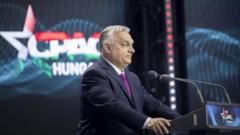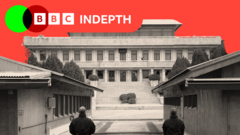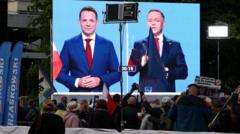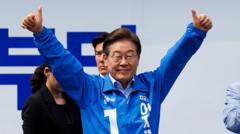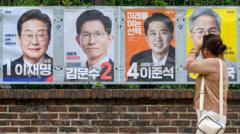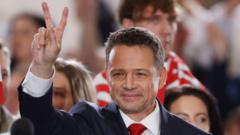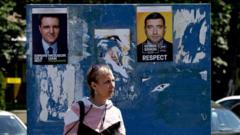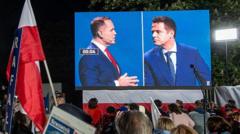As the South Korean presidential election approaches, the voices of striking temporary workers echo through the country. Among the most visible is Kim Hyoung-su, a 52-year-old subcontracted worker at Hanwha Ocean, who has taken his grievances to unprecedented heights—literally. For the past 77 days, Kim has been living in a makeshift tent on a 98-foot-tall traffic camera tower in central Seoul, refusing to come down until his plight—and that of similar laborers—receives the attention it deserves.
Desperate Workers Protest Labor Inequality in South Korea's Presidential Campaign

Desperate Workers Protest Labor Inequality in South Korea's Presidential Campaign
In a dramatic turn, labor inequality takes center stage in South Korea's presidential election, highlighted by a worker's 77-day protest atop a traffic camera tower.
"I feel like an animal in a cage, eating, sleeping, and relieving myself in the same place," Kim told reporters from his lofty perch. His decision to protest highlights a growing divide as labor inequality continues to permeate discussions leading up to the presidential election. Although they share buses, uniforms, and workstations with directly hired employees at Hanwha, subcontracted workers like Kim earn significantly less, often just half of their counterparts' salaries.
Kim's protest is drawing attention to the disparities within an industry crucial to South Korea's economy. His banner cries out for recognition of the "discrimination I couldn’t stand anymore." As his brave stance captures national attention, candidates are being forced to reckon with the urgency of labor issues as voters consider the real-world implications of economic inequality in their final decisions at the polls.
Kim's protest is drawing attention to the disparities within an industry crucial to South Korea's economy. His banner cries out for recognition of the "discrimination I couldn’t stand anymore." As his brave stance captures national attention, candidates are being forced to reckon with the urgency of labor issues as voters consider the real-world implications of economic inequality in their final decisions at the polls.

